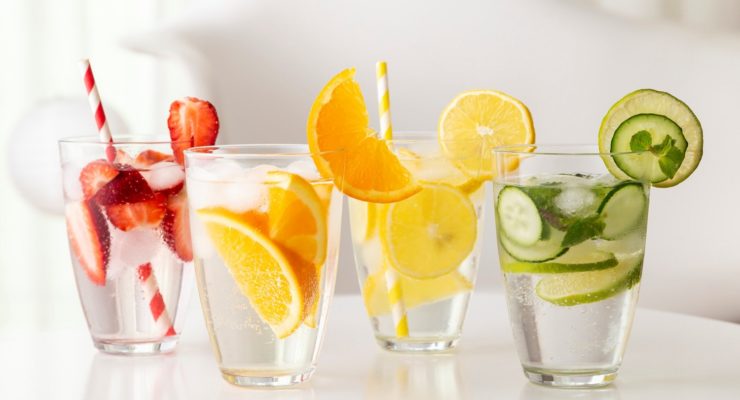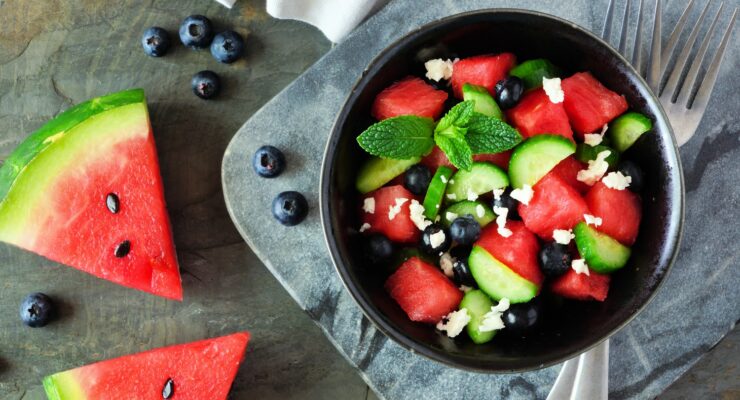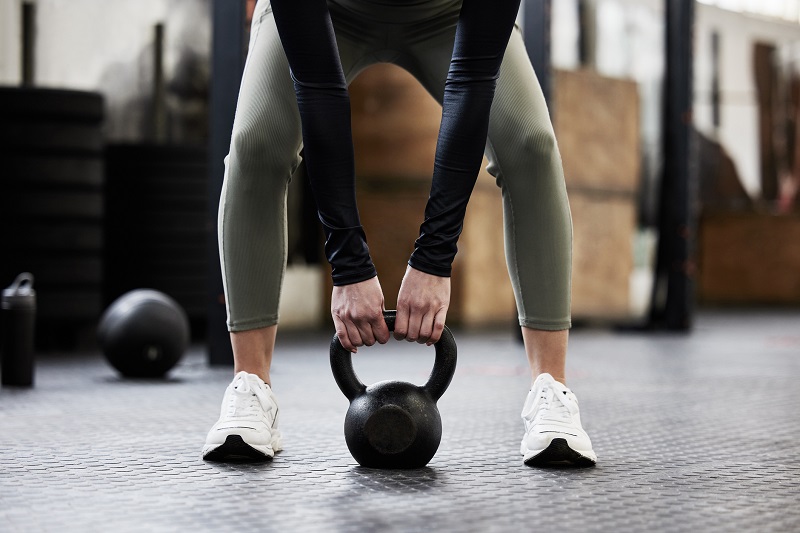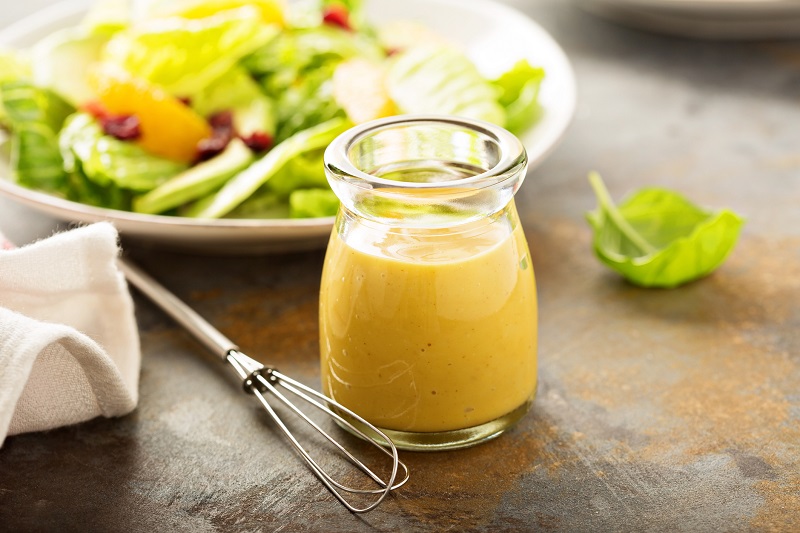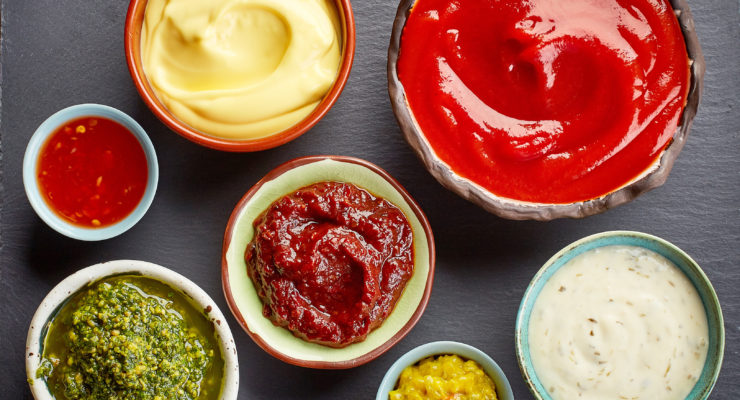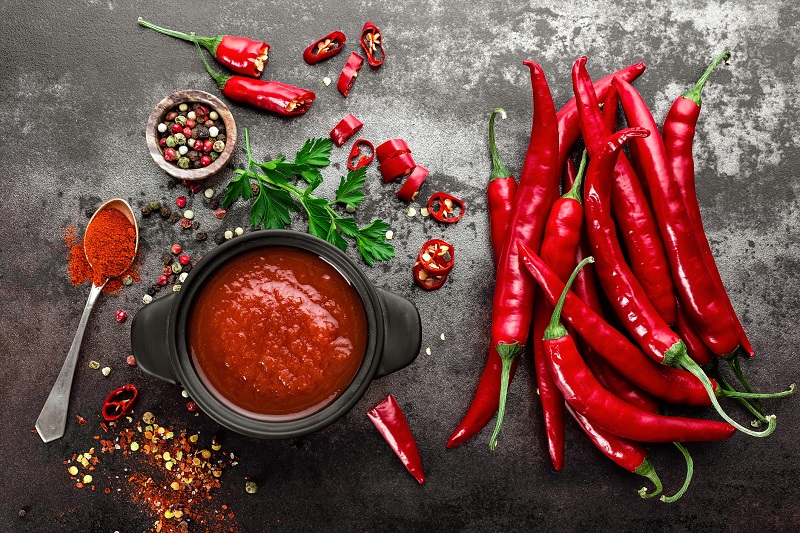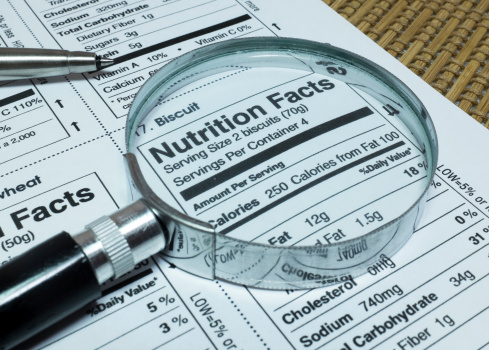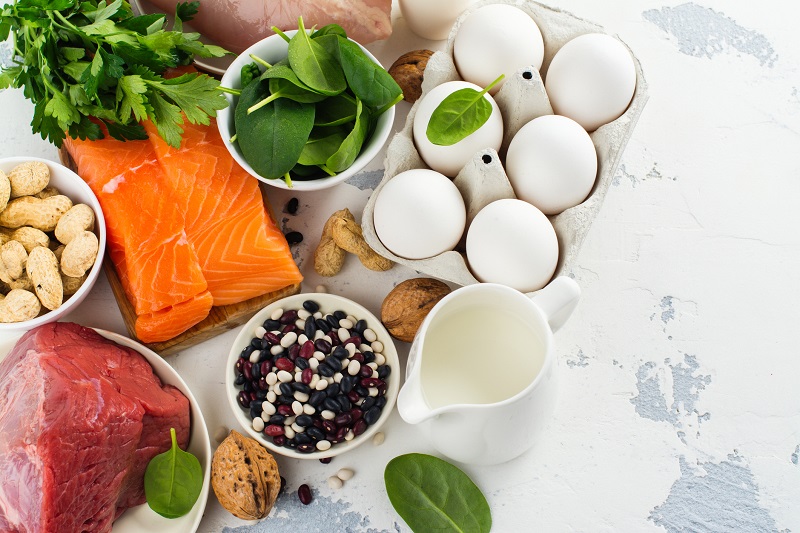9 Seasonal Summer Foods to Stock Up On
Hot, sunny days that last long into the evening invite us to eat simple meals full of fresh ingredients that are abundant in summer. Produce shelves and farmer’s markets offer so many favorite seasonal summer fruits and vegetables that you can enjoy them every day and never grow bored. Here are nine healthy seasonal foods that hit their peak in summer, along with tips and tempting ideas for eating them.
1. Basil

Is basil an herb used to add flavor to marina sauce and other Italian-style dishes? Or is it a leafy green you can toss in salads, stir into omelets and blend into smoothies? The answer is both! Basil is an herb with a fresh, lemony flavor that perks up many summer dishes. It’s a Free Food on the Nutrisystem weight loss plan, so you can enjoy as much as you want!
Nutritional highlights: Basil has almost no calories, fat or cholesterol, but it does have a healthy supply of antioxidants, compounds that help control “free radical” cells, which are believed to support the development of cancer. Basil also is a good source of vitamin K, a micronutrient that has been linked to a reduction in weight and abdominal fat, according to a research report in the European Journal of Clinical Nutrition.
Tasty ideas: Pesto is a thick sauce, traditionally with made pine nuts, Parmesan cheese, olive oil and basil. It’s used as a dressing for pasta, a topping for sandwiches and more. We make a healthier version, Not Your Mother’s Pesto that reduces the calories and fats. It’s perfect for pairing with other summer foods like zucchini! For a hearty breakfast or light lunch, try our Instant Pot Tomato Basil Frittata.
2. Blueberries

Juicy and sweet with just a hint of tart, fresh blueberries are one of the most iconic summer foods. Gathering them yourself at a “pick-your-own” farm is a fun way to spend a sunny day while also getting in some exercise. But however you get them, you’ll find it hard to resist popping them in your mouth. Blueberries also pair well with many other fresh summer foods.
Nutritional highlights: Blueberries are a SmartCarb, meaning they are high in fiber, with over 3.5 grams per cup. Blueberries are a good source of potassium, an electrolyte that works with sodium to maintain your fluid and blood volumes. Consumption of the compound that gives blueberries their color, called anthocyanin, is associated with a reduced risk of type 2 diabetes and cardiovascular disease and with improved weight maintenance, says a report in the journal, Advances in Nutrition.
Tasty ideas: Fresh blueberries are delicious on their own or simply stirred into nonfat yogurt. We love to include them in Mini Pancake Bites. They also star in our light and flavorful Blueberry Peach Feta Salad.
3. Cucumbers

Cucumbers are famously cool and they’re also full of fluids that help you stay hydrated on sultry days. The long, smooth-skinned varieties are typically eaten fresh, while shorter, bumpier types are the best choice for pickling. Rounded, yellow lemon cucumbers have a faint citrus-like taste.
Nutritional highlights: Whichever type of cuke you choose, try to eat them without peeling off the skin—most of the fiber and nutrients, such as vitamin A, are concentrated right underneath the peel. Cucumbers are made of mostly water, so they are one of the best summer foods for helping you stay hydrated in the heat. A non-starchy vegetable you can enjoy in unlimited amounts, cucumbers can also be applied to your skin and are said to help with swelling, irritation and alleviating sunburn.
Tasty ideas: Thin slices of cucumber add refreshing flavor to plain water or seltzer. You can stuff cucumber “cups” with goat cheese and herbs or crabmeat. For a fast, flavorful snack, make a batch of our 3-Ingredient Spicy Cucumber Snack Sticks.
4. Eggplant

Many hearty summer meals start with eggplant, which holds up well to grilling as well as roasting and baking. It has rich, meaty flesh that becomes creamy when cooked. In summer, you can choose from traditional oblong shaped eggplant with dark purple or violet skin or long, narrower Asian types that come in white, shades of green or purple. No matter which you choose, smaller eggplants are generally more tender and less seedy than big ones.
Nutritional highlights: Cooked eggplant is low in calories (less than 35 in a one cup serving) and carbohydrates (8.6 grams per serving). It also contains vitamin A and C while also being a good vegetable source of calcium and potassium. A non-starchy vegetable, eggplant is unlimited when you’re on a Nutrisystem weight loss plan
Tasty ideas: For a simple side dish, spray sliced eggplant with zero-calorie cooking spray and sprinkle on oregano and pepper, then grill until tender. Thick slices of eggplant are sturdy enough to substitute for crust in our Eggplant Margherita Pizza recipe. Air Fried Eggplant Parm Poppers turn a popular entrée into a tasty snack the whole family will love.
5. Melons

Cantaloupe, muskmelons, honeydew, watermelon and other sweet and juicy members of the melon family hit their peak at just about the same time as the temperatures do. You can choose from a wide variety of options, but all of these summer foods are delicious and refreshing on hot days. To find one that’s perfectly ripe, push your thumb into the spot on the end where the fruit connected to the vine. You should feel it give a little, but not too much.
Nutritional highlights: All of these summer fruits are SmartCarbs, so they’re high in fiber. Because they contain a good amount of natural sugars, limit your servings to one cup of cubed melon. Cantaloupe and honeydew are rich in potassium, vitamin C and vitamin B6. Cantaloupe is also a great source of vitamin A! Watermelon contains lycopene, which has been shown to decrease the risk of cancer. Eating watermelon as a snack also helped satisfy the appetites of obese people, leading to weight loss and reduced risk of cardiovascular disease, according to a study in Nutrients.
Tasty ideas: Eating fresh slices of melon right from the rind is one of summer’s most pleasurable treats. Take the refreshment to another level by pureeing melon flesh in a blender, then freezing it in paper cups with popsicle sticks inserted. The whole family will love them on a hot summer day. At parties, cookouts or whenever you want to cool off, treat yourself to a Non-Alcoholic Watermelontini!
6. Peaches and Nectarines

Biting into a fresh peach (fuzzy skin) or nectarine (smooth skin) is like a taste of summer sunshine. They are juicy but firm, with a lightly sweet flavor. Both come in varieties with deep yellow or white flesh. Peaches and nectarines are often sold before they’re fully ripe as they bruise easily once they hit their peak. They’ll finish ripening in a paper bag left at room temperature for a few days.
Nutritional highlights: Both peaches and nectarines are low in calories—about 60 for a medium size fruit—and provide you with around two grams of fiber each. They contain vitamins A, C and E, as well as potassium, calcium and iron. We also love that these summer foods are rich in antioxidants!
Tasty ideas: Peaches and nectarines add sweetness and bulk to smoothies such as our Peachy Green Ginger Smoothie. Cut them up into cubes and add them to plain nonfat yogurt for a filling breakfast or lunch. If you love classic desserts, make our simple but satisfying Skinny Peach Cobbler. For a different yet light summer treat, slice peaches and nectarines in half and remove their pits. Brush the cut sides lightly with honey and sprinkle them with cinnamon. Grill them with the cut side down and cook for eight to 10 minutes, until the fruit is hot throughout.
7. Peppers

Sweet and hot peppers bring brilliant colors and flavors to many summer meals. They come in a wide range of types, from blocky bells to tapered frying peppers to spicy chilies that can be mild or fiery. Whichever type you like, keep in mind that the more colorful varieties are the most nutritious and tasty—green peppers in most cases are not fully ripe (though perfectly edible). They are all non-starchy vegetables, so you can eat as much of them as you want without hindering progress to your weight loss goal.
Nutritional highlights: A single bell pepper provides more than 100 percent of your daily needs for vitamin C. Peppers are also good sources of vitamin A and antioxidants. Capsaicin, the compound that is the source of the heat in hot peppers, has been shown in studies to stoke your metabolism even after you’re done eating.
Tasty ideas: Dip bell peppers slices in hummus for a filling snack. Meatball Stuffed Peppers is a simple and creative way to cook up one of your favorite Nutrisystem meals: Meatballs in Marinara Sauce. You can also toss a few—or a lot, if you dare—spicy peppers into omelets, chili or our Chicken Enchiladas recipe.
8. Tomatoes

You can buy tomatoes year-round these days, but only in summer can you find them after they’ve ripened under the sun, with the perfect balance of acidity and sweetness. (In other seasons, tomatoes are grown in hot houses and picked before they’re fully ripe.) Growing your own is fun and you don’t need a big garden to produce a steady harvest—check out our guide to raising a healthy crop of tomatoes yourself. Whether you grow or buy tomatoes, the best tasting varieties are the heirloom beefsteak types—big and meaty, with just the right amount of juice inside. Paste or plum tomatoes are ideal for making fresh salsa or pasta sauce. Cherry tomatoes are easy to eat alone or added to summer salads and other seasonal foods.
Nutritional highlights: One cup of the average raw red tomatoes gives you about 20.4 milligrams of vitamin C, 353 milligrams of potassium and just 27 calories. According to the Annual Review of Food Science and Technology, “Lycopene is a non-provitamin A carotenoid that is responsible for the red to pink colors seen in tomatoes, pink grapefruit, and other foods.” This compound has been correlated with reduced risks of some cancers, however more research is needed on the subject. Bonus: Drinking tomato juice may help reduce body weight, body fat, waist circumference and BMI, according to a study in the journal Nutrition.
Tasty ideas: Salsa is a flavorful dip and makes a tasty topping to so many dishes. Better yet, it’s a Free food, which means you can enjoy as much of it as you want. And it’s easy to make yourself in minutes with our simple recipe. Heirloom Tomato Salad is a perfect summer side dish for meals at home or a cookout with family and friends. For even more flavor, try oven roasting tomatoes.
9. Zucchini

The green summer squash known as zucchini just might be the most versatile non-starchy vegetable. You can eat them raw with dip, grill or sauté them, and hollow them out as “boats” you can stuff with other ingredients. With a spiralizer tool, you can transform zucchini into zoodles—low-calorie, low-carb pasta. (You may also find zoodles pre-made in many supermarkets.) Thin-skinned yellow squash are also in season during the summer.
Nutritional highlights: In one cup of raw zucchini, you get 19 calories and less than one gram of fat. It also contains vitamin A, vitamin C and potassium.
Tasty ideas: Add shredded zucchini to your favorite pancake recipe to start the day with a serving of non-starch vegetables. 4-Ingredient Stuffed Buffalo Zucchini Boats feature the flavor of your favorite chicken wing sauce along with melted mozzarella cheese. Try Crispy Zucchini Chips for dunking in salsa or other low-calorie dips.
The post 9 Seasonal Summer Foods to Stock Up On appeared first on The Leaf.
from The Leaf https://leaf.nutrisystem.com/summer-foods-to-stock-up-on/



